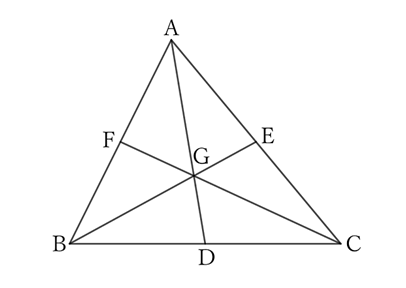Problem
Let $AD, \ BE$ and $CF$ be the three median lines of $△ABC$, respectively. Then,
$$\frac{1}{2} (AB+BC+CA)<AD+BE+CF<AB+BC+CA.$$
$$ $$
$$ $$
$\downarrow$ $\downarrow$ $\downarrow$ $\downarrow$ $\downarrow$
$$ $$
$$ $$
$$ $$
$$ $$
$$ $$
$$ $$
$$ $$
$$ $$
$$ $$
$$ $$
Solution

From the problem $0097 \ (2)$,
$$\frac{1}{2} (AB+CA-BC)<AD, \qquad \frac{1}{2} (AB+BC-CA)<BE,$$
$$and \qquad \frac{1}{2} (BC+CA-AB)<CF,$$
$$∴ \ \frac{1}{2} (AB+BC+CA)<AD+BE+CF. \qquad [1]$$
Moreover, from the problem $0097 \ (1)$,
$$AD<\frac{1}{2} (AB+CA), \qquad BE<\frac{1}{2} (AB+BC),$$
$$and \qquad CF<\frac{1}{2} (BC+CA),$$
$$∴ \ AD+BE+CF<AB+BC+CA. \qquad [2]$$
From $[1]$ and $[2]$,
$$\frac{1}{2} (AB+BC+CA)<AD+BE+CF<AB+BC+CA.$$
$ $
$ $
$ $
Reference Teiichiro Sasabe (1976) The Encyclopedia of Geometry (2nd edition), Seikyo-Shinsha, pp.23-24.